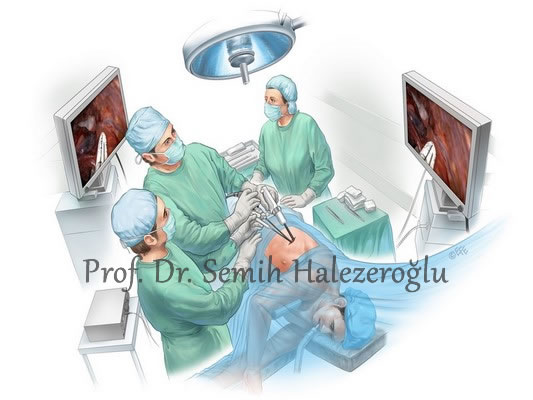What is Single Port Thoracoscopy?
- It is a closed (endoscopic) operation method that is performed with very low (minimal) tissue damage in the diagnosis and treatment of many diseases in the rib cage, especially the lungs
- Performed using a single small incision from 1 to 5 cm
- As in open surgeries, the intercostal area is not opened.
- It is applied through only one incision instead of 3 or 4 separate incisions in standard thoracoscopy or robotic method
- As the incision is small and only one, the postoperative period is comfortable in terms of pain and respiratory functions
- Quick return to normal life
- It is the most advanced technique used in lung cancer surgery today
Why Single Port Thoracoscopy?
- Because it is a highly secure method
- Because the success rate is high
- Because the patient satisfaction rate is high
- Because complication rates are low
- Because postoperative pain is less
- Because the hospital stay is short
- Because it is the first preferred surgical method in all developed countries
How To?
(All drawings are copyrighted by Prof.Dr. Semih Halezeroğlu. Should not be used without permission)
Under general anesthesia, an incision of 1-5 cm is made on the side of the chest.

A 10mm diameter surgical camera is advanced into the chest cavity and images are projected onto the screen.

The surgeon performs the surgical treatment by looking at the images on the screen.

QUESTIONS AND ANSWERS
Question: How many days do I need to stay in the hospital?
Answer: The length of hospital stay varies between 1 and 4 days, depending on the type of surgery we perform with this method. This period is 3 or 4 nights on average in patients with lung cancer, and 1 or 2 nights in benign tumors.
Question: Will I stay in intensive care after surgery?
Answer: We apply a 1 night intensive care stay in surgeries performed for lung cancer. In other surgeries, this is not necessary.
Question: How many days can I return to normal life after leaving the hospital?
Answer: This situation differs from person to person. On average, one returns to normal life between 1 -5 days after leaving the hospital.
Question: Is there a lot of pain after surgery?
Response: As there is only one small incision, there is no severe pain. Existing pain is controlled with painkillers used
Question: How many times has your team performed this surgery?
Response: The number of surgeries performed by our team between January 2010 and July 2016 is 750.
Question: Is this surgery likely to turn into an open operation?
Response: Yes, 1% of all our patients were not treated with this method, and open surgery was performed. This rate is 4% in patients with lung cancer.
